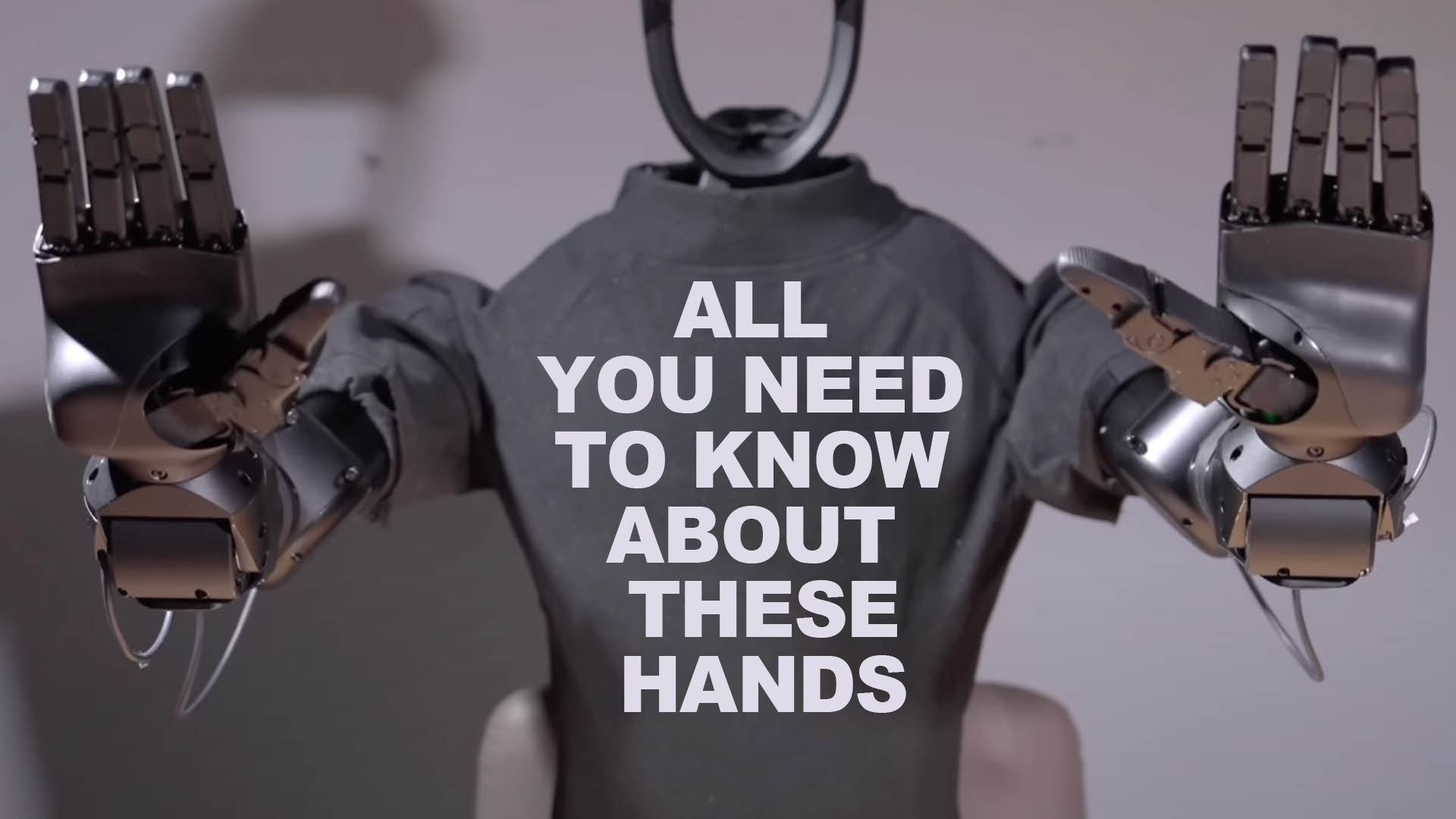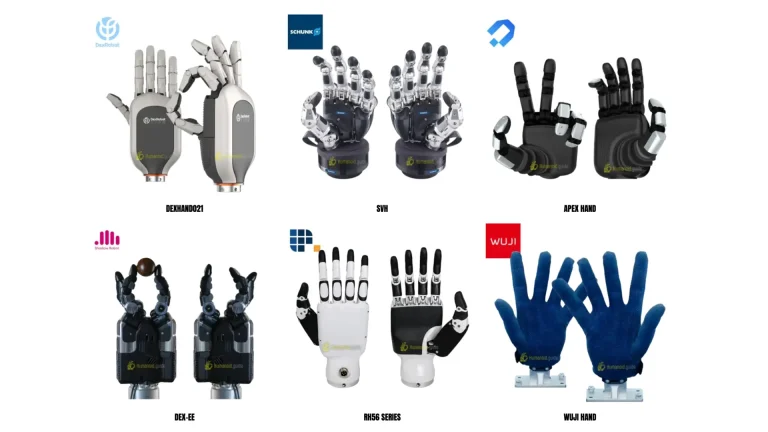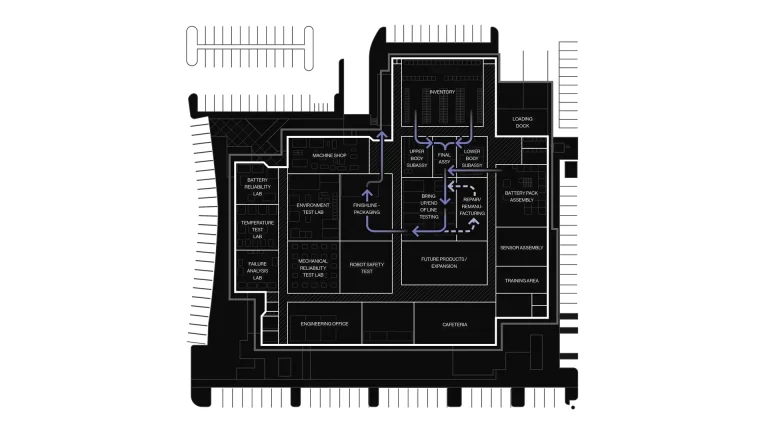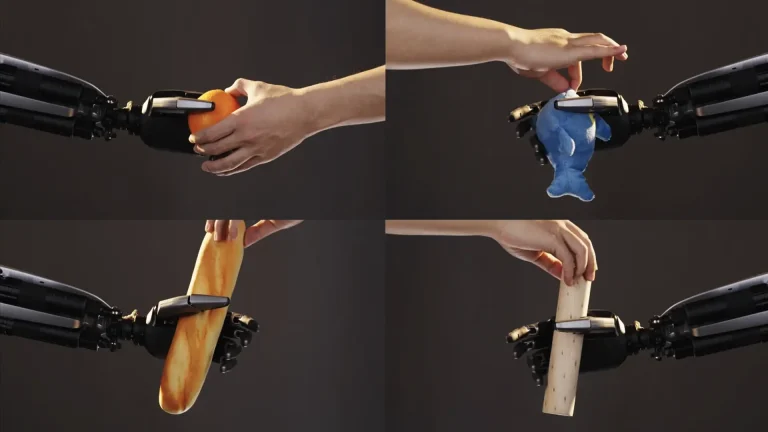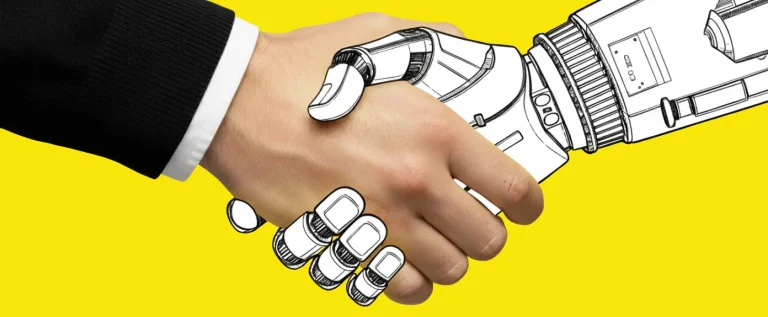All You Need to Know About the Unitree Dex5 Hand
Imagine a robot hand that can solve a Rubik’s Cube, pick up fruit without squishing it, and even handle delicate playing cards. Meet Unitree’s Dex5 – a five-fingered dexterous robotic hand packed with tech that brings robot dexterity closer to human level. This playful yet powerful gizmo is turning heads in the robotics world, and for good reason. In this article, we’ll break down what makes the Dex5 special (in plain English!), why it matters, and how it fits into Unitree’s growing robot family.
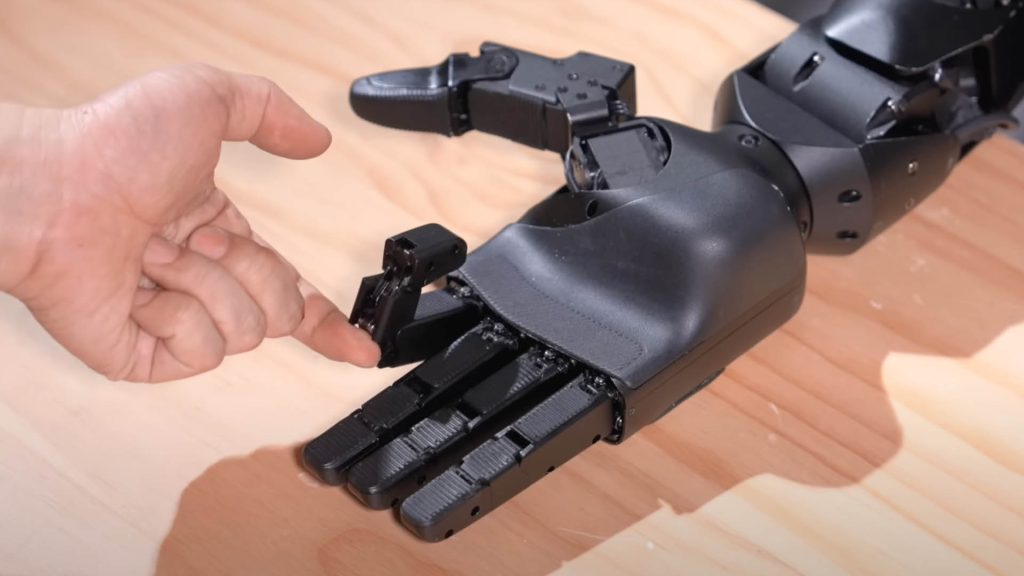
What is the Unitree Dex5 Hand?
The Unitree Dex5 is a new robotic hand developed by Unitree Robotics. It’s called “Dex5” because it has five fingers and is highly dexterous (meaning skillful and flexible). Essentially, Dex5 is like a robotic human hand. It has 20 degrees of freedom (DOF) – which is a fancy way to say it has 20 independent ways it can move or rotate. (For comparison, a human hand has around 20-25 DOF in its fingers, so Dex5 is nearly as flexible as a human hand!) Each of the Dex5’s five fingers is packed with joints – the thumb alone has four joints, and each other finger has three active joints, plus some extra passive movement This means Dex5 can bend and twist its fingers in many directions to grasp objects of all shapes.
2026 Humanoid Robot Market Report
160 pages of exclusive insight from global robotics experts – uncover funding trends, technology challenges, leading manufacturers, supply chain shifts, and surveys and forecasts on future humanoid applications.

Featuring insights from
Aaron Saunders, Former CTO of
Boston Dynamics,
now Google DeepMind
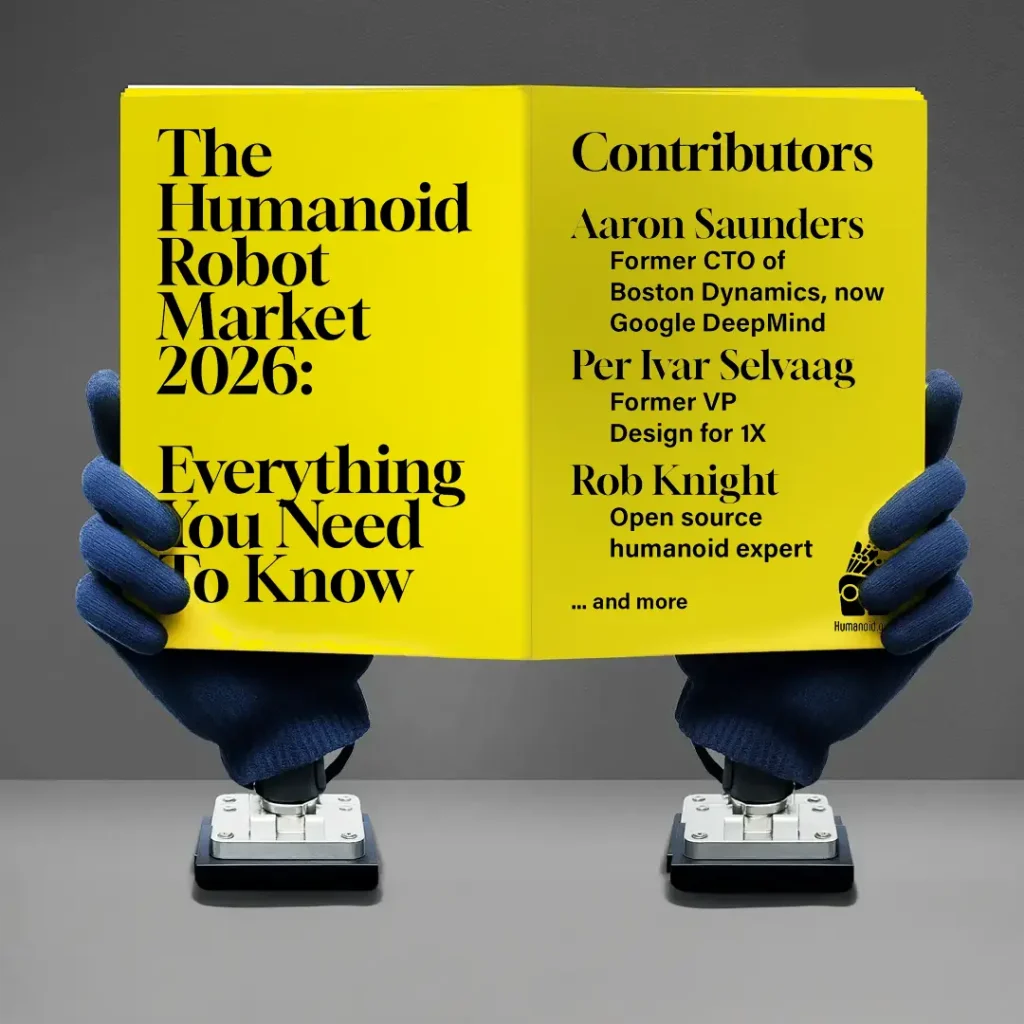
2026 Humanoid Robot Market Report
160 pages of exclusive insight from global robotics experts – uncover funding trends, technology challenges, leading manufacturers, supply chain shifts, and surveys and forecasts on future humanoid applications.
Importantly, Dex5 isn’t a stiff robot claw – it’s designed to move smoothly and naturally. All its joints feature smooth backdrivability, which is a technical way to say the fingers can flex and give way under force, allowing direct force control by the motors. In practice, this means Dex5 can adjust how hard it’s gripping something in real time, much like you adjust your grip when holding an egg vs. a hammer. No more “clumsy robot” motions – Unitree specifically notes that this design eliminates stiff hand movements, making operations smoother. The result is a hand that reacts quickly and can apply just the right amount of force for each task, enabling more natural interaction with objects (so it won’t crush your can of soda by accident!)
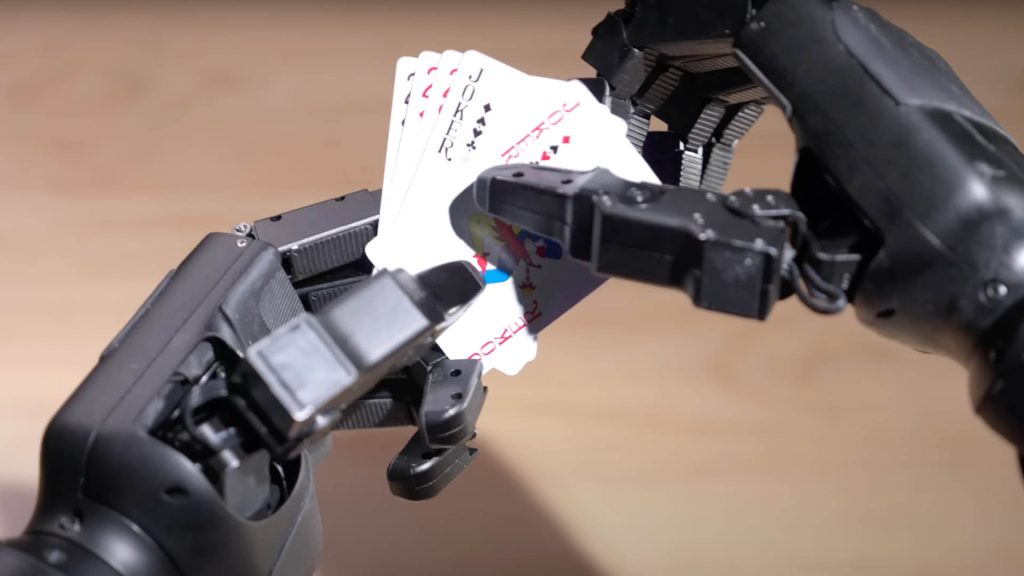
Key Features – Explained Simply
The Unitree Dex5 robotic hand, a five-fingered mechanical hand designed for agility and precision (shown here in a test setup). Each finger is loaded with joints and sensors, allowing human-like movement and touch sensitivity.
Let’s break down the Dex5’s key features in non-geek speak:
- 20 Degrees of Freedom: As mentioned, “degrees of freedom” just means independent movements. With 20 DOF (16 powered joints + 4 passive) in one hand, Dex5’s fingers can wiggle and bend almost like a real hand. This high flexibility lets it grip all sorts of items – from thin cards to round fruits – by adjusting each finger’s position precisely.
- Smooth, Force-Controlled Joints: Dex5’s joints are backdrivable and have direct force control. This means the hand can sense resistance and smoothly adjust force. In plain terms, Dex5 can grip gently or firmly as needed. If it starts to squeeze an object and feels it resist, the fingers can automatically ease off – no jerky motions. This is great for handling fragile objects (like eggs or electronics) without breaking them, and it gives the hand quick reflexes to adapt its grip on the fly.
- 94 Touch Sensors (“Touch Points”): Here’s where Dex5 really starts to feel human-like – it can “feel” what it touches. Each Dex5 hand can be equipped with up to 94 tiny tactile sensors embedded in the fingers and palm. These sensors act like nerve endings in a skin, detecting when and where the hand is touching something and how much pressure is there. In practice, this allows the robot to tell if an object is slipping or to judge how hard it’s holding an item. For example, if Dex5 picks up an orange, the touch sensors can help it sense the fruit’s surface and ensure it’s not squeezing too hard. (Unitree offers the sensors as an option, so you might see a “Dex5-1P” model with the full 94 sensor array.) With this sense of touch, the Dex5 gains exceptional dexterity and perception of objects.
- “Snake-Like” Flexibility: Beyond bending its fingers, Dex5 has an extra trick: the four long fingers can swing laterally (sideways) by about ±22° together. Think of this like how you can splay your fingers apart or bring them together. This lateral motion helps Dex5 adapt to wide or curved objects. If it grabs a ball or bottle, the fingers can shift to conform to the curve, making the grip more secure. It’s an added flexibility that many simpler robot hands lack.
- Modular and Well-Built: Each of the five fingers is independently replaceable. So if one finger gets damaged from, say, a too-zealous handshake, it can be swapped out easily. The hand is made with high precision components – tiny high-power motors, low-friction gear trains, and a design that avoids any big gaps where things could snag. All this means Dex5 moves fluidly and is robust. It weighs about 1 kg (a little over 2 lbs) and can lift a few kilograms in a grip, so it’s strong for its size. Yet, it’s precise: Unitree claims each fingertip can repeat movements with ~1mm accuracy and can apply up to about 10N of force (around 1 kgf) before the grip maxes out – enough to hold tools or perform tasks requiring a bit of strength.
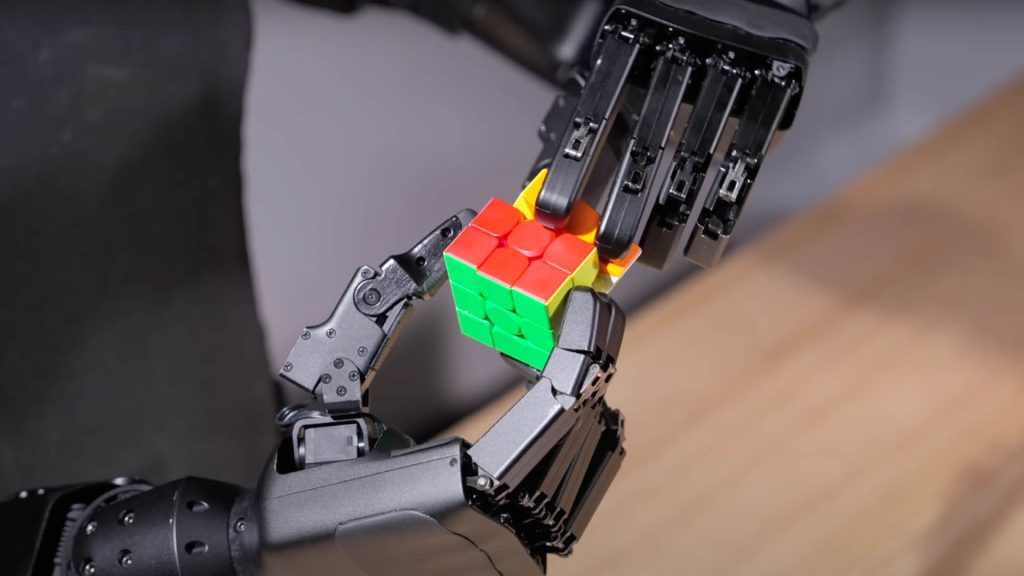
Why is Dex5 a Big Deal in Robotics?
Robotic hands have been around for a while, but Dex5 is pushing the envelope. Many robots today either use simple grippers (like two-finger pincers) or at best a three-fingered claw for picking things up. Those work for basic tasks but are nowhere near what a human hand can do. The Dex5, however, is much closer to human hand capability – it has a similar count of joints and even a sense of touch. This level of dexterity is usually seen only in expensive lab prototypes or Hollywood robots. Unitree bringing it into a product is “a significant breakthrough” in robotic manipulation
What makes Dex5 special compared to other robotic hands is the combination of features in one package. Some robot hands might have lots of joints but no tactile sensors. Others might have sensors but are bulky or not very agile. Dex5 checks all the boxes: nimble fingers, sensitive touch, precise force control, and a relatively compact, plug-and-play design. It’s designed to be both high-performance and practical for real-world use. This could be a game-changer for robots that need to interact with everyday objects.
For instance, think about a service robot in a home or factory – to be truly useful, it must handle “various complex actions” and object types. With a hand like Dex5, a humanoid robot could do things like twist doorknobs, pick up a pen, tie shoelaces, or open jars – tasks that are extremely hard for robots with clamp-like grippers. By giving robots a human-like hand, Dex5 opens the door (literally and figuratively) to a wider range of activities. Researchers also love the fact that Dex5 is backdrivable and safe, because it means they can try out advanced AI and reinforcement learning techniques without fear of the hand destroying itself or its environment if the AI makes a mistake. In other words, the robot hand can learn by trial and error more gently, which could accelerate learning to perform intricate tasks.
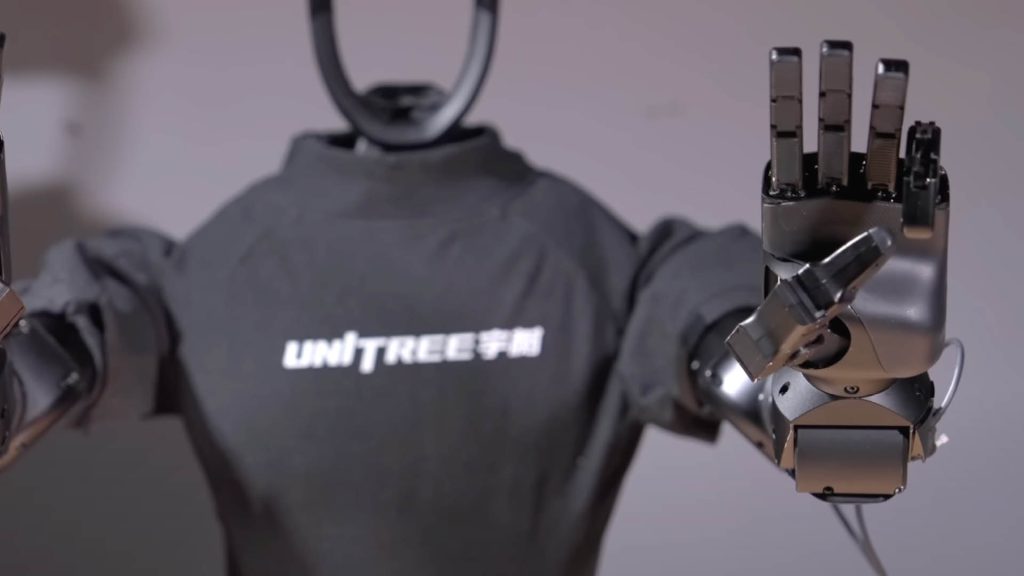
Dex5 in Action: What Can It Do?
So, what has Dex5 actually demonstrated? Unitree has shown off this robo-hand doing some pretty neat tricks. In demonstration videos, Dex5 effortlessly performs tasks like picking up oranges, dealing playing cards, and solving a Rubik’s Cube. That’s right – it can manipulate a Rubik’s Cube with one hand! Solving a Rubik’s Cube requires very fine finger control to rotate the cube’s sides without dropping it. Dex5 accomplishes this, showcasing how precise its movements are and how well it can coordinate all those fingers. Handling soft fruits like oranges shows the hand can apply a gentle touch (it won’t turn your orange into juice unless asked), while grasping thin objects like cards or paper demonstrates sensitivity and precision in fingertips. These examples highlight the hand’s potential for complex manipulations in real life – whether it’s sorting objects, assembling small parts, or even performing simple games and magic tricks!
The Dex5 robotic hand demonstrating its dexterity by manipulating a Rubik’s Cube. Its 20-DOF design and force feedback allow it to grip and rotate the cube’s pieces without dropping or crushing it. Such demonstrations show how Dex5 brings human-like skill to robot hands.
Watching Dex5 in action, it’s easy to get excited about what robots might do with such capable hands. For example, a humanoid robot chef could chop vegetables and stir dishes with one hand while adding spices with the other. A maintenance robot could use tools – turning a screwdriver or plugging in cables – tasks that require the nuanced grip of a human hand. Even in healthcare or caregiving, a gentle yet agile hand is crucial: imagine a robot that could help elderly people by picking up pills or holding a cup of water steadily. Dex5 brings us closer to these scenarios by giving robots the “hands” to match their “brains” (AI).
Another fun aspect is that Dex5 allows remote operation with feedback. Because it has sensors and smooth control, a person could potentially control Dex5 (through something like a glove or gamepad) and feel what the robot hand feels. This tele-operation could let humans “be present” in dangerous or distant environments via the robot’s hand – useful for handling hazardous materials or performing remote surgeries, for example. Unitree even subtitled one of their demos “Remote Operation with Data Capture,” hinting at such applications.
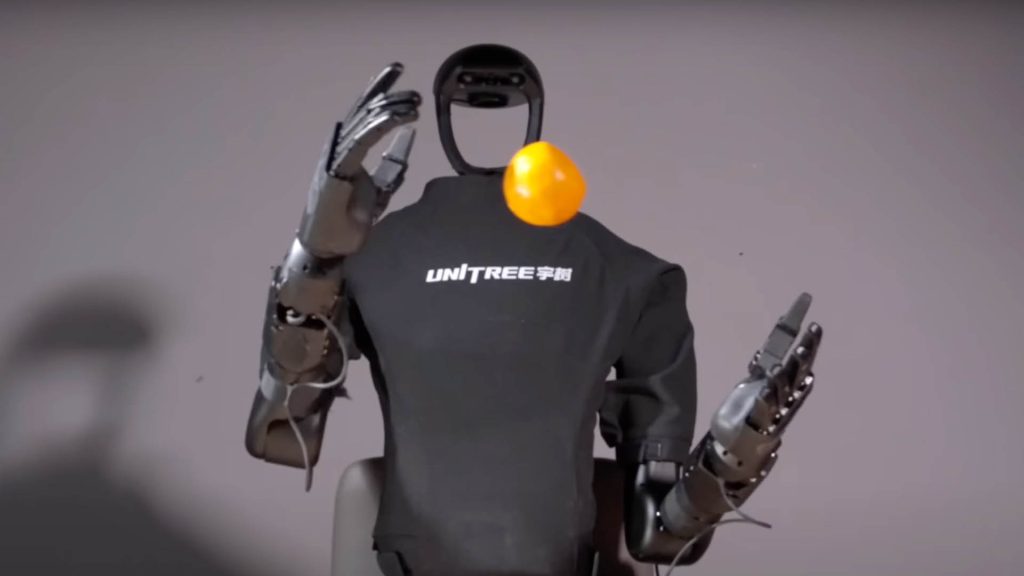
Part of Unitree’s Robot Family (The Bigger Picture)
Dex5 isn’t an isolated gadget; it’s part of Unitree’s broader robotics ecosystem. Unitree Robotics is known for its agile quadruped robots (think robotic dogs like the Unitree Go1) and has been working on humanoid robots too. In fact, Unitree has a humanoid robot model called the G1. The Dex5 hand is designed to be the end-effector (hand) for these humanoids. Unitree’s earlier humanoid prototypes used a simpler 3-fingered hand (the Dex3) to perform tasks. Now, Dex5 provides a huge upgrade in ability – essentially giving the Unitree humanoid robot a pair of full five-finger hands as good as a human’s. According to Unitree, the dexterous hands can be mounted on the G1 humanoid to enable precise operation of objects, simulating human hands. In other words, Dex5 is the key for Unitree’s robots to actually use their environment like we do.
It’s easy to see how Dex5 fits into Unitree’s grand vision. The company isn’t just making cool robot pets; they are aiming to build affordable, functional humanoid robots for real-world use. By developing a hand like Dex5, Unitree is tackling one of the hardest parts of humanoid design – manipulation. A humanoid robot with Dex5 hands and a smart AI could, in theory, take on many tasks in homes, factories, or offices that previously only people could do (because you needed fingers!). This could put Unitree in a strong position in the emerging humanoid market. Some tech enthusiasts even speculate that Unitree could become to humanoid robots what DJI is to drones – a dominant player making advanced robotics widely accessible
Another aspect of the Unitree ecosystem is compatibility and open development. The Dex5 hand communicates via a simple interface (USB) and works over a range of voltages, meaning it can be integrated into different robot platforms relatively easily. Developers and researchers can attach Dex5 to robotic arms or other robots, not just Unitree’s own, to experiment with dexterous manipulation. Unitree has been releasing software (like Unitree ROS packages) and promoting reinforcement learning uses for their robots, so having a sophisticated hand like Dex5 will likely spur lots of new research and DIY projects in robotics communities.
Exciting leap
Unitree’s Dex5 hand is an exciting leap forward, bringing robots one step closer to human-like touch and agility. For a robotics fan, it’s downright inspiring to see a robot hand shuffle cards and solve puzzles. But even if you’re not a tech geek, the implications are easy to appreciate – more capable robot hands mean more helpful robots in our daily lives. The Dex5’s combination of many joints, smart force control, and touch sensing gives robots the finesse to handle the real world’s messy variety of objects. It’s the difference between a robot that can only lift boxes and one that can fold your clothes or make you a sandwich.
From Unitree’s labs to possibly our homes, the Dex5 is a reminder that we’re living in the future envisioned in sci-fi. As Unitree’s humanoid robots gain these dexterous hands, we may soon see them performing chores, assisting in hospitals, or working side by side with humans in factories. It’s all hands on deck in the robotics world – and with Dex5, Unitree has given robots an impressive new hand to work with. Whether you’re excited or a tad nervous about our robot helpers, one thing’s for sure: the Dex5 hand is a gripping development in robotics (pun intended!), and it’s paving the way for a new generation of agile humanoid machines.
Sources: Unitree Robotics official announcements and demos; AIbase news report on Dex5 aibase.com aibase.com; Robotic Gizmos blog roboticgizmos.com roboticgizmos.com; Unitree product specs and documentation unitree.com unitree.com.

